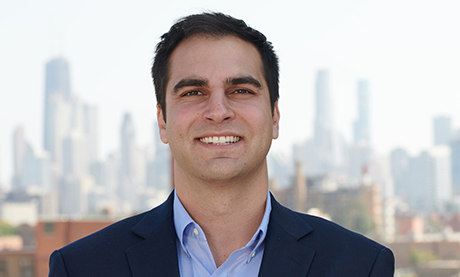By Max Grossman
Many cities across the U.S. are grappling with two persistent challenges: a lack of affordable housing and high property taxes. While these issues may seem separate, some policymakers have implemented programs that can address both at the same time.
Chicago’s affordable housing supply is short by approximately 120,000 homes and 240,000 rental units, according to the Illinois Policy Institute. Additionally, nearly one-third of Illinois residents commit more than 30 percent of their income toward housing, the most of any state in the Midwest.
The city is also no stranger to the burden of high property taxes. The effective property tax rate on commercial assets in Chicago was 4 percent in 2022, according to data collected by the Lincoln Institute of Land Policy, which is more than double the 1.83 percent average of the largest cities in each state. That report also showed Chicago’s residential properties were hit with a 1.52 percent effective tax rate in 2022, ahead of the 1.32 percent national average and second only to Houston.
While the market’s notoriously high property taxes can be a deterrent to out-of-state investors, there are opportunities for alignment between smart business strategies and good housing policies. One example is Cook County’s Affordable Housing Special Assessment Program (AHSAP). Offering a potential for tax relief, the program helps reduce the barrier to entry for coastal investors interested in Chicago and other Cook County properties.
Along with my colleagues at Interra Realty, I have counseled numerous clients on the best way to navigate this initiative. The incentive, which can serve as a model for municipalities around the country, is helping stabilize neighborhoods, attract investment and create a more affordable rental market.
Through AHSAP, property owners can seek a reduction in the assessed value of a multifamily building. Eligibility requires property owners to undertake significant rehabilitation of an existing rental property, demonstrate ongoing maintenance and make affordable units available to households at or below 60 percent of the area median income (AMI).
There are three tiers for AHSAP eligibility: buildings that include 15, 20 or 35 percent affordable units. The flexibility in participation levels enables property owners to scale capital investments according to the specific needs of a building. Properties in the 15 percent tier receive a 25 percent assessed value reduction while 35 percent tier buildings benefit from a 35 percent reduction of assessed value. For properties in the 20 percent affordability tier, the reduction applies to the difference between the assessed value of the property in the base year and the post-rehabilitation value.
AHSAP has clear upsides for the supply of affordable housing in the coverage area, as multifamily building owners are incentivized to create and preserve affordable units. As I have seen first-hand with my clients, investors stand to gain as well.
The most obvious benefit is a lower property tax bill. However, the program also helps multifamily buyers better assess the financial viability of investment opportunities, particularly those in need of significant repairs. Deals that might not otherwise pencil out may have a clear path forward due to the lower tax burden. And while Chicago property taxes are high, they are also volatile. AHSAP provides a level of stability that attracts investors wary of unpredictable tax hikes.
Another plus is that participation in the program is transferable with sale of the property. This allows owners to tap into a deeper pool of prospective buyers when bringing program-approved properties to market. On the other side of the transaction, investors can better assess the financial viability of a property prior to acquisition, as those with deferred maintenance could be eligible for tax breaks.
Many large cities have introduced legislation to mandate or encourage creation of affordable housing. These include Washington, D.C.’s Inclusionary Zoning Plus program, Chicago’s own Affordable Requirements Ordinance and Minneapolis’ first-of-its-kind elimination of single-family zoning.
There are few initiatives like AHSAP, however, that aim to improve affordability in existing properties. This is a cost-efficient approach to providing and improving housing options within neighborhoods where many low-income residents already live. The program offers a replicable model for other markets, showing how to enhance the rental housing sector while ensuring safer and higher-quality living conditions.
Max Grossman is a director at Chicago-based Interra Realty, which specializes in middle-market multifamily investment.


